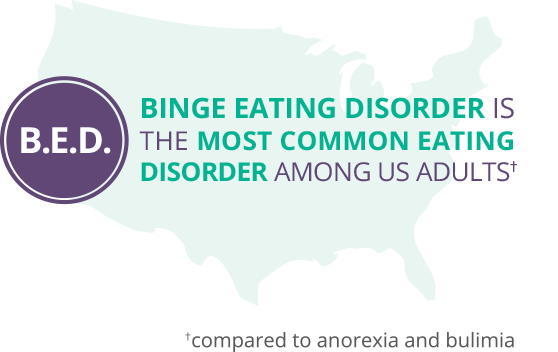Like many children, 4-year-old Anna Woltjen pesters her mother during shopping trips for sweets and snacks. She has a fondness for all kinds of goodies but saves the hard sell for her favorite brands: Cookie Dough Bites, SuperPretzel and Icee frozen treats.
The New Jersey preschooler also asks for her mother’s iPhone to play some of her favorite games, including “Cookie Dough Bites Factory,” “SuperPretzel Factory” and “Icee Maker.”
U.S. food companies are reaching children by embedding their products in simple and enticing games for touch-screen phones and tablets. The new medium is far cheaper than Saturday morning TV commercials and could prove as effective.
The mobile games demonstrate how new technology is changing U.S. commerce, drawing tighter bonds between marketers and young consumers.
“The apps are certainly targeted at kids,” said Melinda Champion, vice president of marketing at J&J Snack Foods Corp. in New Jersey, which makes SuperPretzel and Icee drinks. “If you get the kids saying, ‘Mom, I would love a SuperPretzel,’ mom will often buy it for them.”
“It’s almost a constant commercial,” Anna’s mother, Christine Woltjen, said of some smartphone games favored by her three children. Ms. Woltjen, of Moorestown, N.J., accepts that ads are part of U.S. culture, she said: “If it keeps them entertained for a couple minutes, it’s not like my kids are only going to eat Cookie Dough Bites and not vegetables at dinner.”
Makers of snacks, sweet drinks and candy have long been under government and public pressure to limit advertising to minors on TV and the Web. They are now finding the unregulated medium of mobile devices an effective substitute to trigger demand and cinch brand loyalty.
The food-industry games generally have rudimentary graphics and objectives simple enough for small children to understand. They have raised debate over who should be responsible for their impact on children—parents or the government.
No federal regulations govern how advertising is presented to children on the Internet. Some consumer advocates argue rules are needed, given that the Federal Communications Commission already regulates TV advertising directed at children.
Scrutiny of advertising to children has roots in the 1960s, when viewers of Saturday-morning cartoons were inundated with TV commercials for sugary foods. The FCC limits commercial time on weekend children’s shows to 10.5 minutes per hour and effectively prohibits product placement, noting that young children are “more vulnerable to commercial messages.”
Congress in 1980 barred the Federal Trade Commission, which monitors ad practices, from making broad new rules on food advertising to children. The commission and three other federal agencies last year released draft guidelines recommending that companies only advertise healthy foods to children, regardless of the medium. Companies were resistant.
Many parents say they prefer to decide which apps their children use. Some said they don’t pay much attention to how their children use mobile devices.
“The Icee game is definitely a good form of advertising. It definitely works,” said Darren Ortiz of Coaldale, Pa., who was visiting New York’s Times Square recently with his 11-year-old son, Noah. “But like I said, it’s harmless—it’s definitely good that they play that versus some of the other violent videogames that are out there.”
For Noah, talk of the Icee game triggered a craving for the sweet, fizzy, frozen drink. “When I think about it,” he said, “I really want one.”
An emerging childhood obesity epidemic—striking nearly one in five Americans between ages 2 and 19—rekindled debate on new advertising rules.
Large food companies responded in 2006 by forming the Children’s Food and Beverage Advertising Initiative, part of the Council of Better Business Bureaus, which encouraged voluntary commitments to advertising healthier food to children.
Within a year, a dozen companies including McDonald’s Corp., MCD +0.18% Burger King Worldwide Inc., Mars Inc. and Kraft signed a pledge to shift more child-directed advertising to healthier foods. Post Holdings LLC and General Mills Inc.GIS +1.16% later shut down websites that pitched sugary foods alongside games.
In 2008, the council said, “advertising to the nation’s children has already undergone a substantial shift toward the promotion of better-for-you foods.”
By then, smartphones and tablets had started changing consumer habits. Now, some of those same companies are rushing to build a presence on mobile devices with games that appeal to children.
Kraft recently released an iPad app, “Dinner, Not Art.” Players slide pieces of Mac & Cheese around the screen to create “macaroni art.” Kraft said the game and its other mobile-game projects are aimed at and advertised to teens and young adults, though the TV commercial for the app stars two children who appear closer to grade-school age.
In the past six months, the 16 large food companies that make up the Children’s Food and Beverage Advertising Initiative have shown increased interest in mobile marketing, said the group’s director, Elaine D. Kolish.
Ms. Kolish said apps downloaded by parents for their children don’t qualify as child-directed advertising and should be free of any new rules. “We don’t view it as our place to be a superparent—the nanny of the parents and the children to say what products they can see and what games they can play,” she said.
Theresa Kiplinger, a partner at a design firm, helped create one of the first food-branded mobile games called Dum Dums Flick-A-Pop for Spangler Candy Company.The app has been downloaded more than 1.5 million times, Spangler said, and fans have spent the equivalent of more than 112 years swiping through the company’s virtual lollipops.
The game’s typical user, said Spangler marketing chief Jim Knight, is “probably your 6- to 12-year-old.”
Mr. Knight said developing the Dum Dums game cost less than $10,000, barely the price of four 30-second TV spots during Saturday morning cartoons, according to average advertising prices provided by Nielsen.
Susan Woods, Icee’s marketing chief, sums up this controversial topic from a marketing standpoint when she said, “Kids are our No. 1 consumer. The fact that they may think about getting an Icee next time they see an Icee machine is a lot more likely if they’ve engaged themselves with something to do with Icee.”
The percentage of children aged 6–11 years in the United States who were obese increased from 7% in 1980 to nearly 20% in 2008. Similarly, the percentage of adolescents aged 12–19 years who were obese increased from 5% to 18% over the same period (Centers for Disease Control and Prevention, CDC). At Heal n Cure, our Family Practice physician works with children and adolescents to implement health eating habits at a young age. It is our goal to help reverse the obesity trend in this young population.
Obese youth are more likely to have risk factors for cardiovascular disease, prediabetes, bone and joint problems, sleep apnea, and adulthood obesity (CDC). Unhealthy eating habits and physical inactivity are setting this nation’s youth up for a lifetime of health problems. Through Heal n Cure’s Inspire Core Wellness Program we break through the barriers that contribute to childhood obesity which helps ensure our children have a bright future free from chronic disease.
Ref: Child’s Play: Food Makers Hook Kids on Mobile Games




